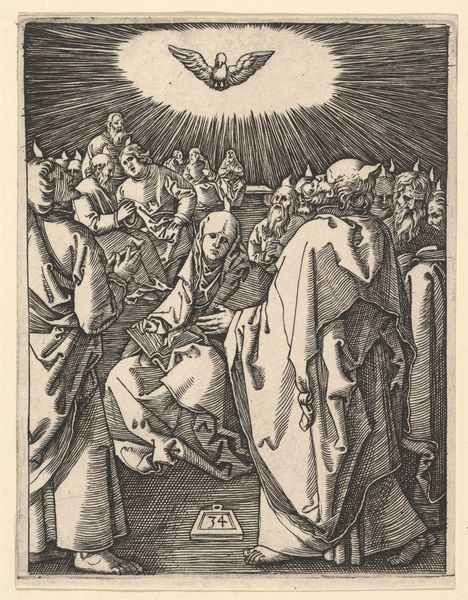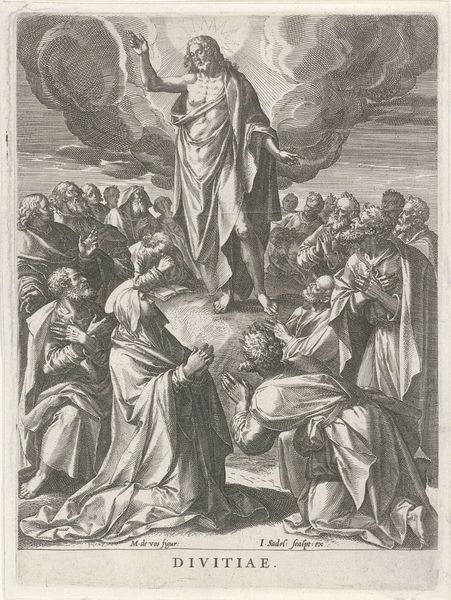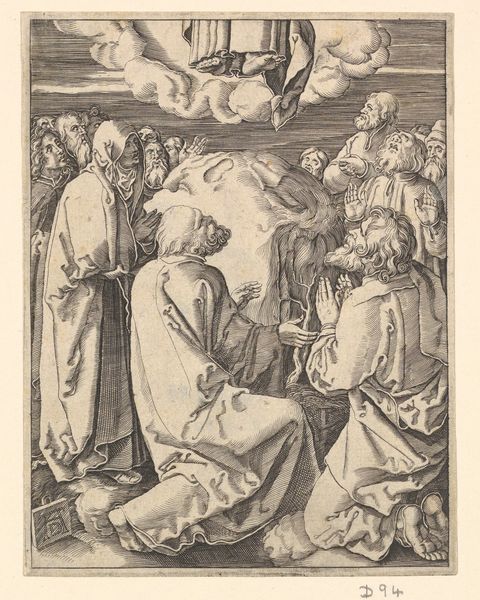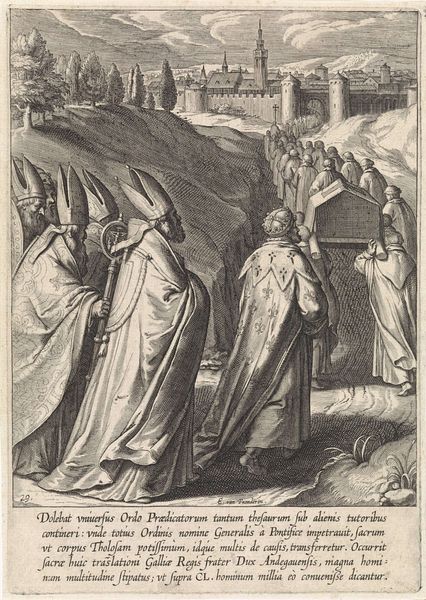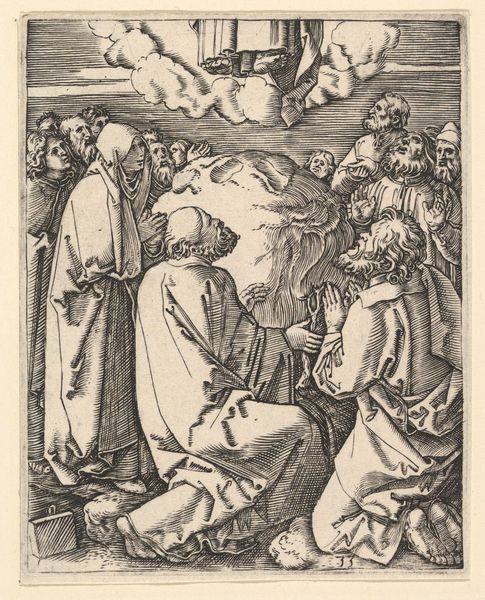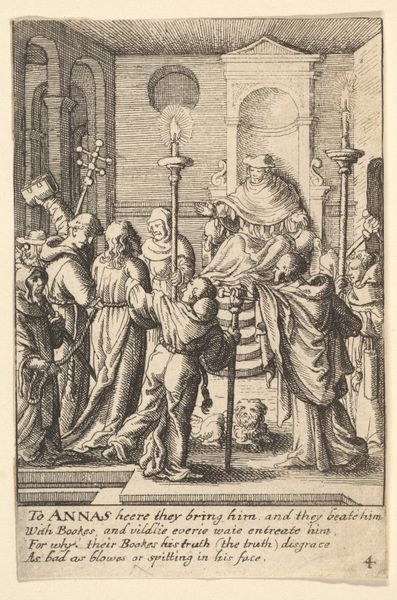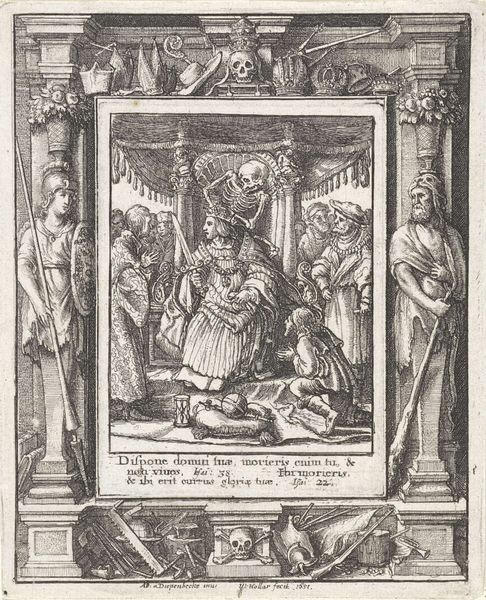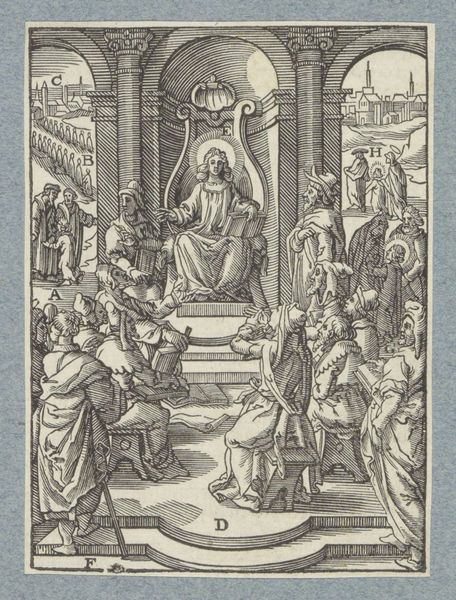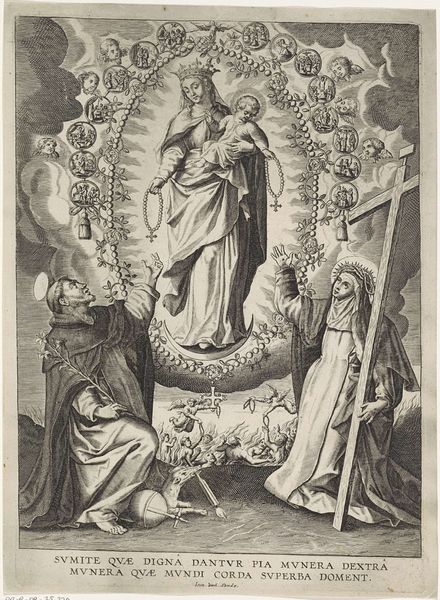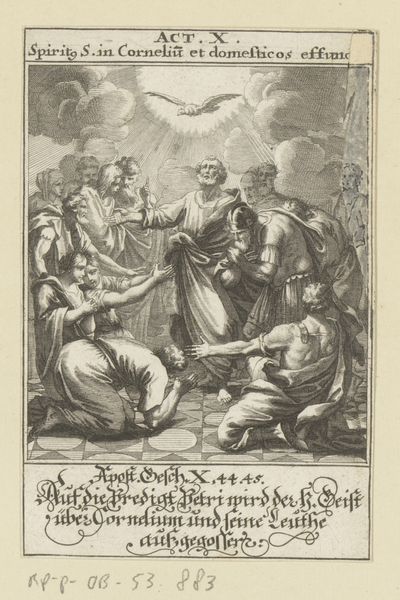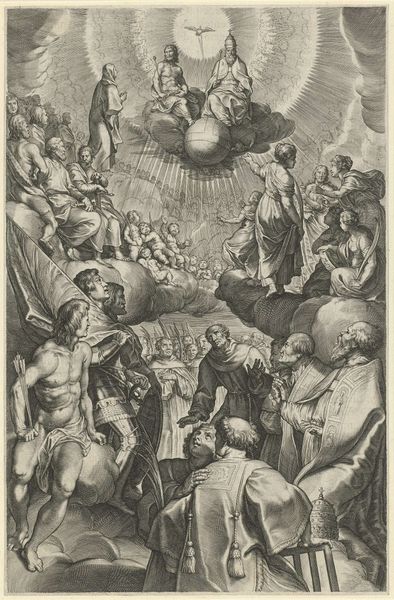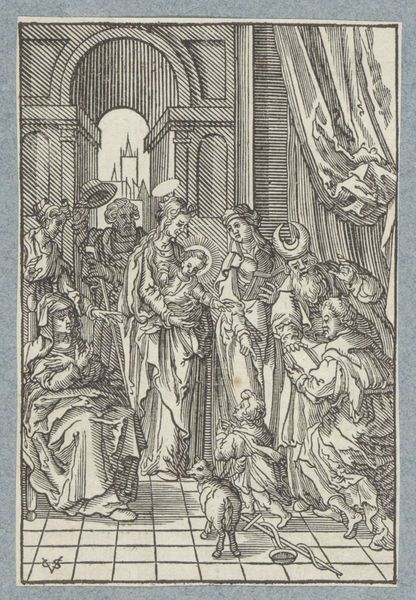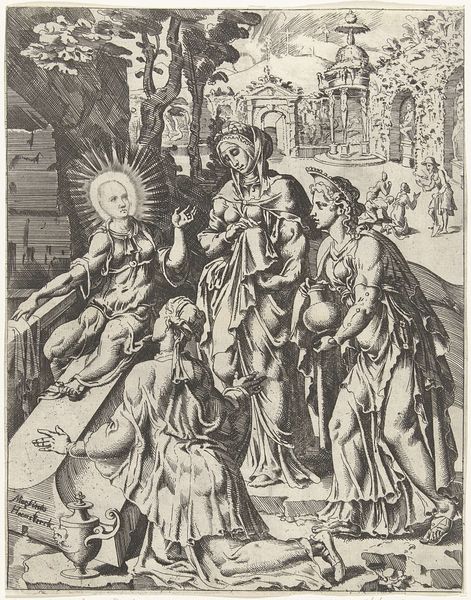
drawing, print, engraving
#
drawing
# print
#
figuration
#
history-painting
#
italian-renaissance
#
engraving
#
virgin-mary
Dimensions: For the whole series: plate circa : 5 x 3 13/16 in. (12.7 x 9.7 cm)
Copyright: Public Domain
Curator: This engraving, entitled "Engraved copies of The Little Passion," attributed to Albrecht Dürer, comes from a period spanning 1485 to 1699, reflecting the evolving techniques and interpretations of his work across time. The copy we’re seeing here showcases a scene of Pentecost, rendered in meticulous detail. Editor: It’s quite striking, isn't it? There's a concentrated energy, a palpable sense of anticipation, radiating from the figures. It feels both reverent and slightly chaotic. Curator: Absolutely. The composition certainly directs our focus upwards, drawing our eye to the dove—the Holy Spirit—descending upon the Virgin Mary and the Apostles. It reflects the power structures and iconography that solidified in religious depictions over centuries. Editor: And it speaks volumes about the dynamics of representation. Mary, as a central figure, is framed, literally and figuratively, by these men, highlighting a history where female figures are venerated yet confined within patriarchal narratives. Her vulnerability and submission are almost tools for enforcing dogma. Curator: It’s crucial to remember the printmaking tradition. Dürer's prints had wide circulation. The piece was not only devotional, but a form of knowledge dissemination accessible to a broader public, influencing perceptions of scripture. These copies became agents in shaping religious thought and devotion across different social strata. Editor: Precisely, and in considering these "copies," we must ask: what shifts occur in the visual translation? Does accessibility dilute meaning, or does it empower different readings of the same event across societal structures? We are confronted, once again, with questions of authorship, authenticity, and reception when thinking of the art object’s complex social life. Curator: Indeed. The enduring power of these engravings lies in their capacity to ignite theological contemplation while prompting conversations around authorship, influence, and the very role of art in culture and faith. Editor: For me, seeing how these engraved copies function within the grand narratives of religion and art history reveals more about enduring power dynamics than perhaps initial piety suggests. Thanks for unraveling some of the mysteries behind this work.
Comments
No comments
Be the first to comment and join the conversation on the ultimate creative platform.
